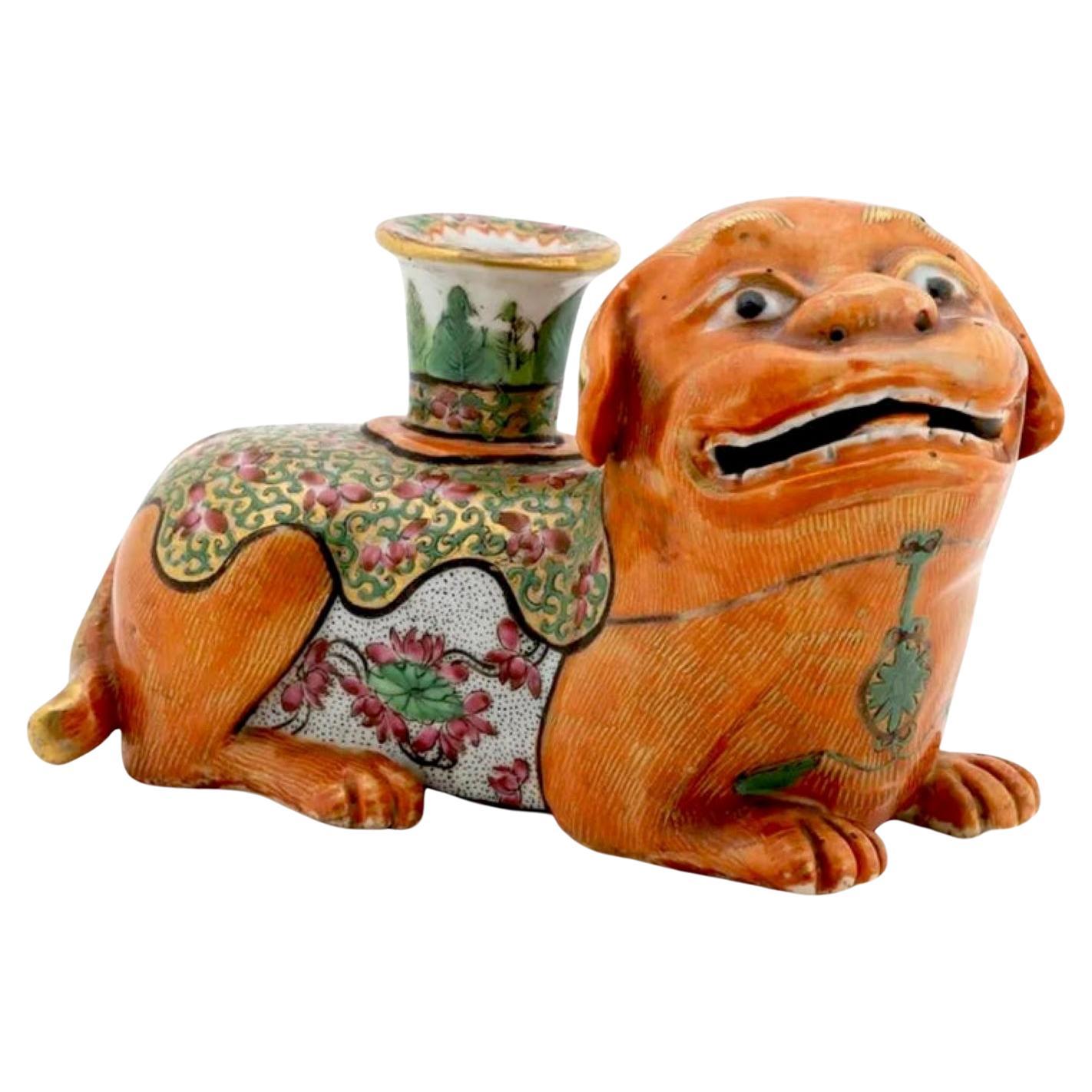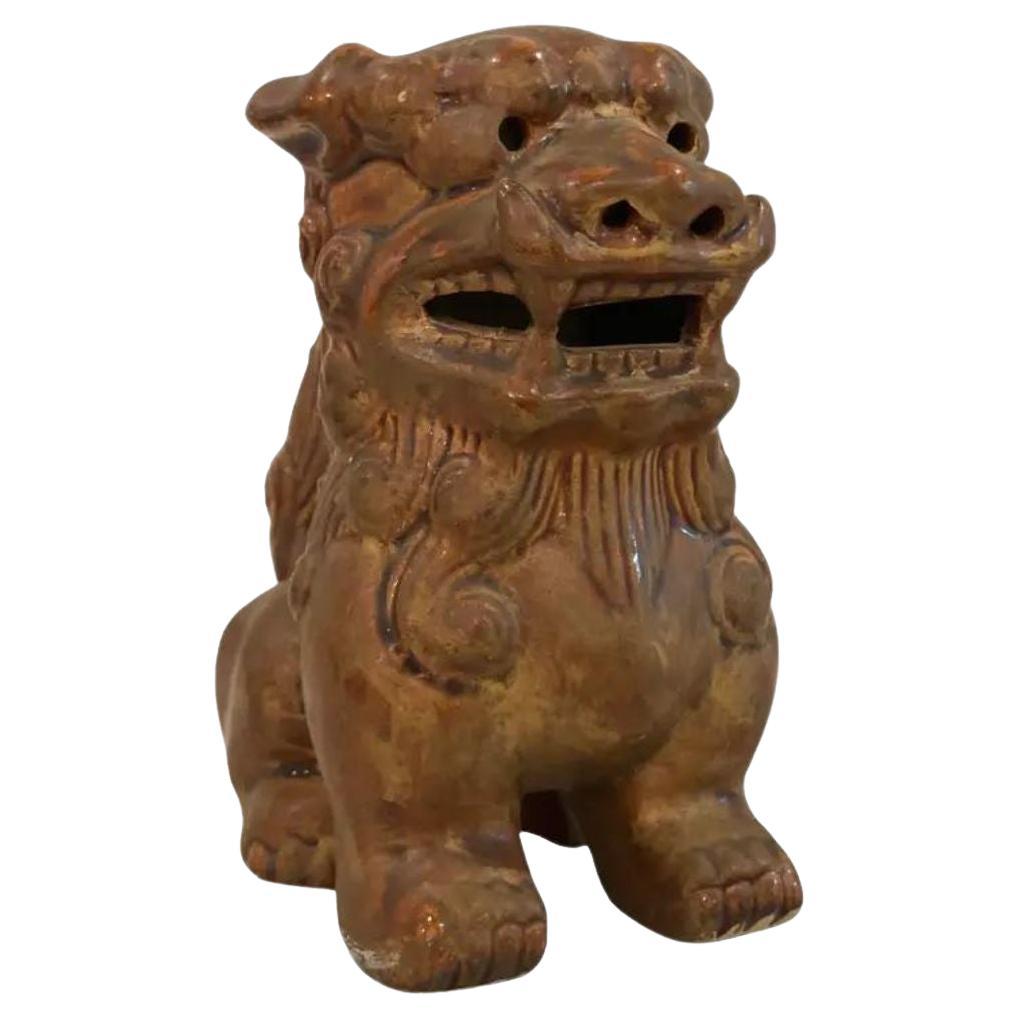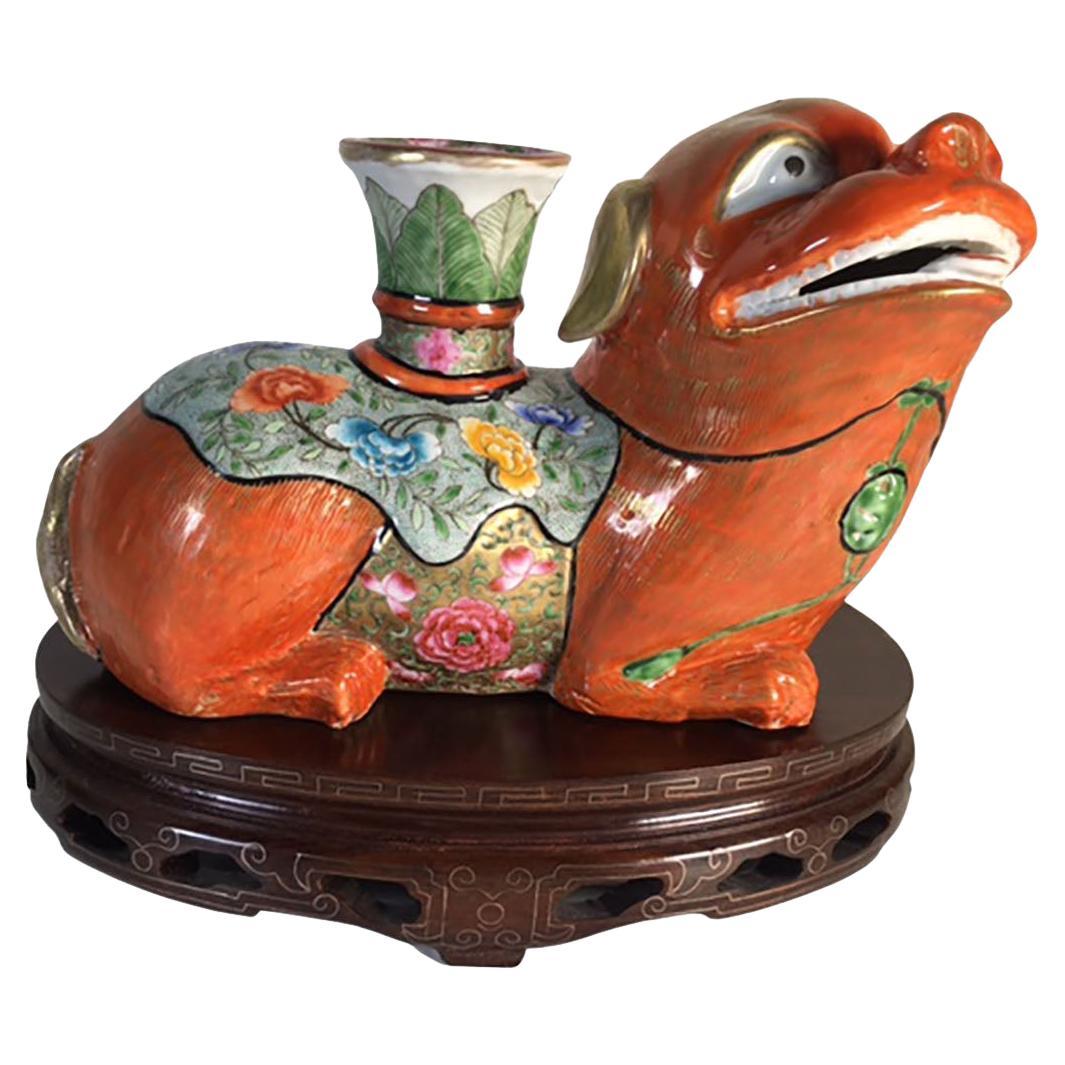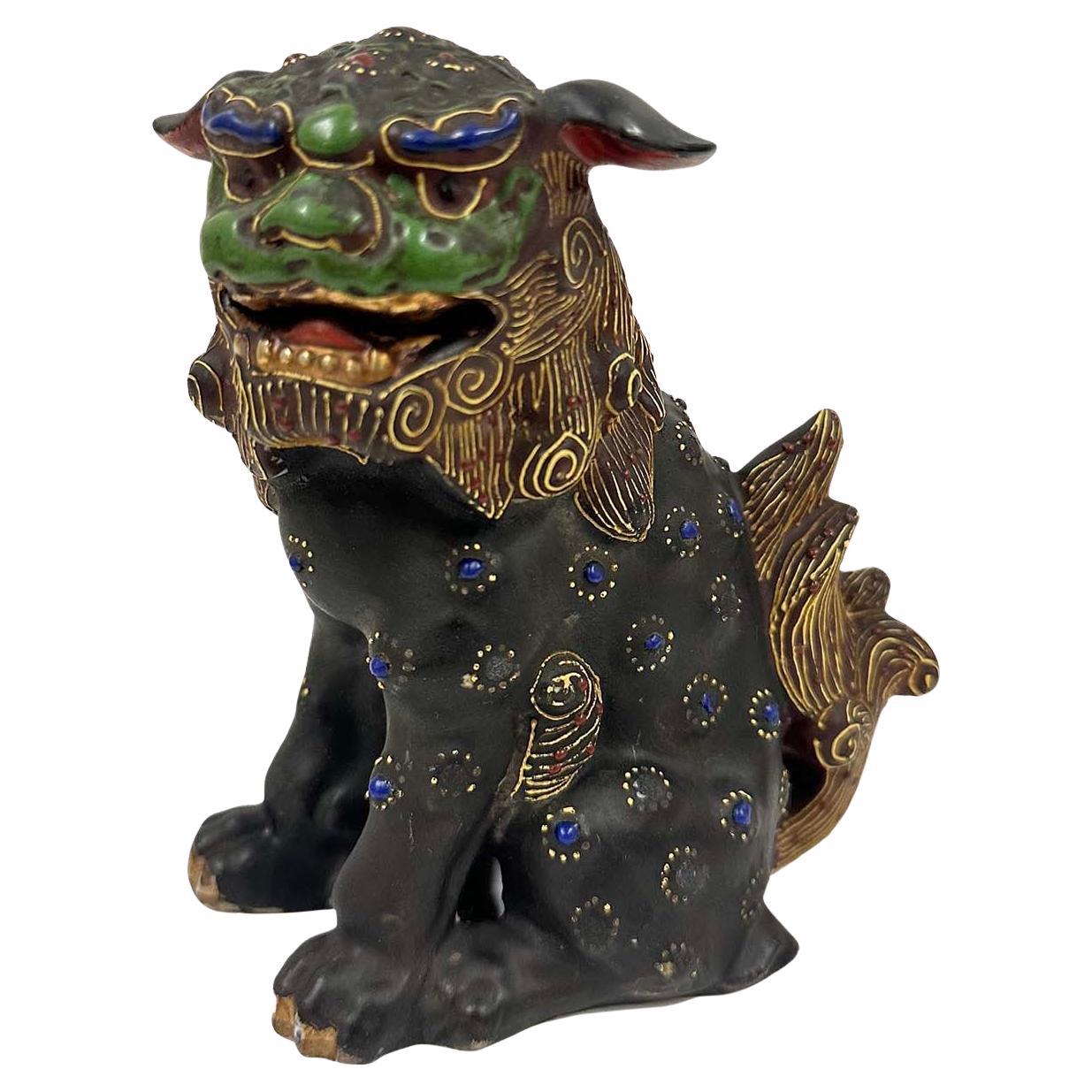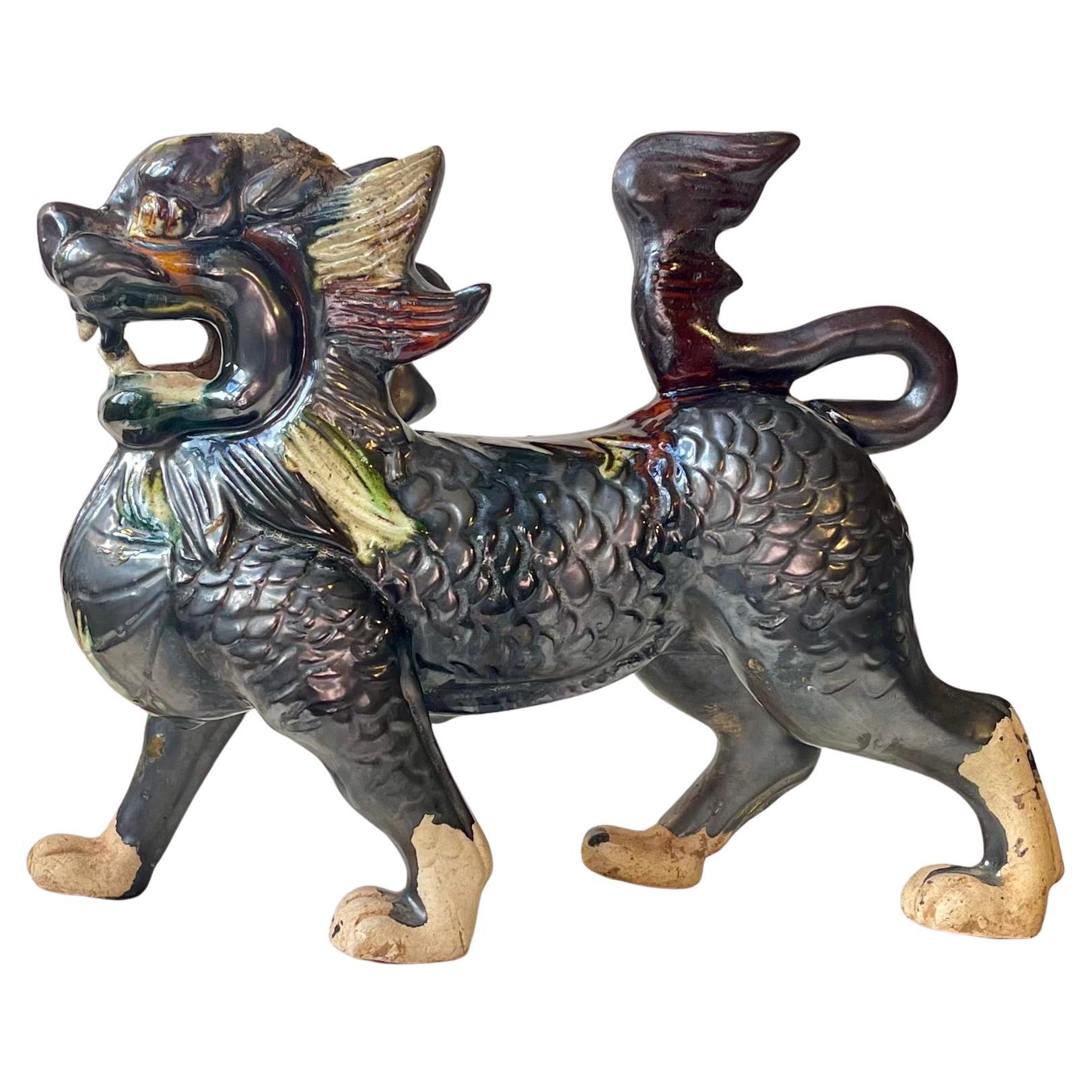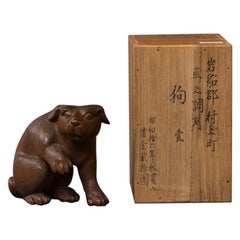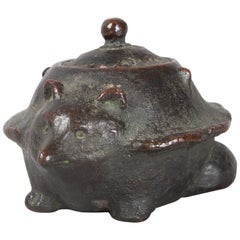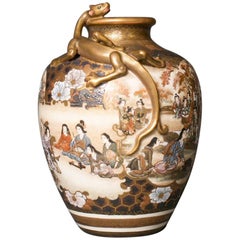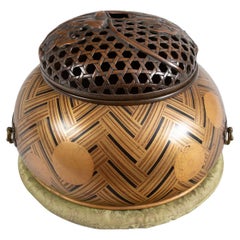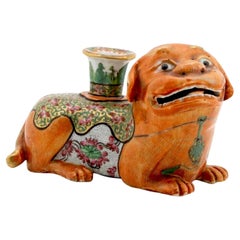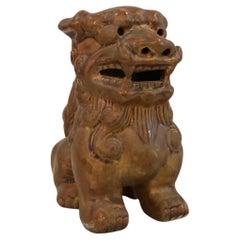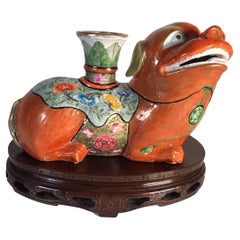Items Similar to Foo-Dog 'Shi-Shi' Incense Burner 'Koro' with Removable Lid
Want more images or videos?
Request additional images or videos from the seller
1 of 14
Foo-Dog 'Shi-Shi' Incense Burner 'Koro' with Removable Lid
$6,500
£4,911.66
€5,684.83
CA$9,119.18
A$10,143.14
CHF 5,321.08
MX$123,769.40
NOK 66,786.26
SEK 62,937.95
DKK 42,434.88
About the Item
This unique piece of ceramic has beautiful color. It also has a collector's box.
- Dimensions:Height: 4 in (10.16 cm)Width: 10 in (25.4 cm)Depth: 8 in (20.32 cm)
- Materials and Techniques:
- Place of Origin:
- Period:
- Date of Manufacture:circa 1800
- Condition:Condition report upon request.
- Seller Location:Hudson, NY
- Reference Number:Seller: A52221stDibs: LU855128389002
About the Seller
5.0
Recognized Seller
These prestigious sellers are industry leaders and represent the highest echelon for item quality and design.
Established in 1971
1stDibs seller since 2008
166 sales on 1stDibs
Typical response time: 8 hours
Associations
The Art and Antique Dealers League of AmericaAntiques Associations Members
- ShippingRetrieving quote...Shipping from: Hudson, NY
- Return Policy
Authenticity Guarantee
In the unlikely event there’s an issue with an item’s authenticity, contact us within 1 year for a full refund. DetailsMoney-Back Guarantee
If your item is not as described, is damaged in transit, or does not arrive, contact us within 7 days for a full refund. Details24-Hour Cancellation
You have a 24-hour grace period in which to reconsider your purchase, with no questions asked.Vetted Professional Sellers
Our world-class sellers must adhere to strict standards for service and quality, maintaining the integrity of our listings.Price-Match Guarantee
If you find that a seller listed the same item for a lower price elsewhere, we’ll match it.Trusted Global Delivery
Our best-in-class carrier network provides specialized shipping options worldwide, including custom delivery.More From This Seller
View AllAntique Japanese Hand Carved Puppy
Located in Hudson, NY
Antique Japanese hand carved puppy. Expertly carved, showing a poised and alert puppy. Comes in original storage box with dedication, artist sign...
Category
Antique Late 19th Century Japanese Sculptures and Carvings
Materials
Wood
Japanese Bronze Koro 'Incense Burner' in the Form of a Badger
Located in Hudson, NY
Japanese bronze Koro (Incense Burner) in the form of a Badger, Edo Period (circa 1800) bronze incense burner with removable top. Badger face and t...
Category
Antique Early 19th Century Japanese Edo Metalwork
Materials
Bronze
Japanese Satsuma Vase with Dragon
Located in Hudson, NY
Japanese Satsuma vase: Ladies of the Court, Kannon and Gilded Dragon. Signed on the bottom.
Category
Antique Late 19th Century Japanese Ceramics
Materials
Ceramic
Early 17th century 'Incense Burner' ( Koro)
Located in Hudson, NY
Early 17th century incense burner( Koro) in basket weave nashiji lacquer pattern with chrysanthemum mons (the national symbol of Japan). Copper grill with detailed waves pattern. Foo...
Category
Antique Early 17th Century Japanese Lacquer
Materials
Copper
Japanese Root-Wood Sculpture of Two Shi Shi Lion Pups
Located in Hudson, NY
with rosewood stand. Must use imagination to see. Collectors kiri-wood box.
Category
Antique Late 19th Century Japanese Sculptures and Carvings
Materials
Wood
Iga Mizusashi 'Water Container for the Tea Ceremony'
Located in Hudson, NY
17th to 18th century Iga ware from Fushinan, Kyoto. Iga embodies the essence of tea ceremony's requirements for wabi-sabi, which appreciates the beauty in imp...
Category
Antique Early 18th Century Japanese Edo Ceramics
Materials
Ceramic
You May Also Like
Carved Wood Foo Dog Decorative Cigar, Cigarette or 420 Ashtray
Located in Los Angeles, CA
Carved Chinese Foo Dog Cigar, cigarette, 420 Ashtray, or Incense Burner - Chinese Guardian Lion.
A unique and very interesting piece. The Foo Dog tilts bac...
Category
20th Century Chinese Chinoiserie Ashtrays
Materials
Wood
19th Century Chinese Export Famille Verte Foo Dog Joss Stick 'Candlestick'
Located in West Palm Beach, FL
19th century Chinese Export Famille Verte Foo Dog Joss Stick (Candlestick)
China, circa 1850
A stunning 19th-century Chinese Export Famille Verte Foo Dog Joss Stick, also known as a ...
Category
Antique 19th Century Chinese Export Candlesticks
Materials
Porcelain
$2,360 Sale Price
20% Off
Circa 1970s Asian Ceramic Foo Dog Statue
Located in Cookeville, TN
Vintage large ceramic foo dog statue with rhinestone eyes. Circa 1970s. Excellent condition. No cracks, no chips.
Category
Mid-20th Century Unknown Animal Sculptures
Materials
Ceramic
Antique Chinese Foo Dog Candle Holder
Located in Dallas, TX
An antique Chinese Foo Dog with silver inlaid wood stand. Circa 1900 very fine detail.
Category
Antique Early 1900s Chinese Ceramics
Materials
Ceramic, Wood
Vintage Japanese Satsuma Colorful Foo Dog Statue
Located in Pomona, CA
Fabulous colorful hand painted Satsuma porcelain foo dogs from Japan feature a colorful decoration on the body with green accents and gold detailing. Handcrafted in Japan, the detail...
Category
Early 20th Century Japanese Anglo-Japanese Sculptures and Carvings
Materials
Ceramic
$374 Sale Price
25% Off
Edo Style Old Foo Dog in Glazed Ceramic
Located in Esbjerg, DK
Old - possibly antique Japanese Edo style Foo or Lion dog. It is executed in glazed ceramic or Oribe. Unfortunately we have not been able to date this more precise but it definitely ...
Category
20th Century Asian Edo Figurative Sculptures
Materials
Ceramic
More Ways To Browse
Japanese Dog
Japanese Incense
Japanese Incense Burner Antique
Incense Box
Japanese Koro
Foo Dog Lid
Japanese Incense Box
Koro Incense
Japanese Shi Shi
Foo Box
Foo Dog Incense
Foo Dog Incense Burners
Antique Foo Dog Incense Burner
Green Gold Imari
Japanese Kutani Porcelain
Qing Dynasty Green
Edo Period Ceramics
18th Century Famille Rose

